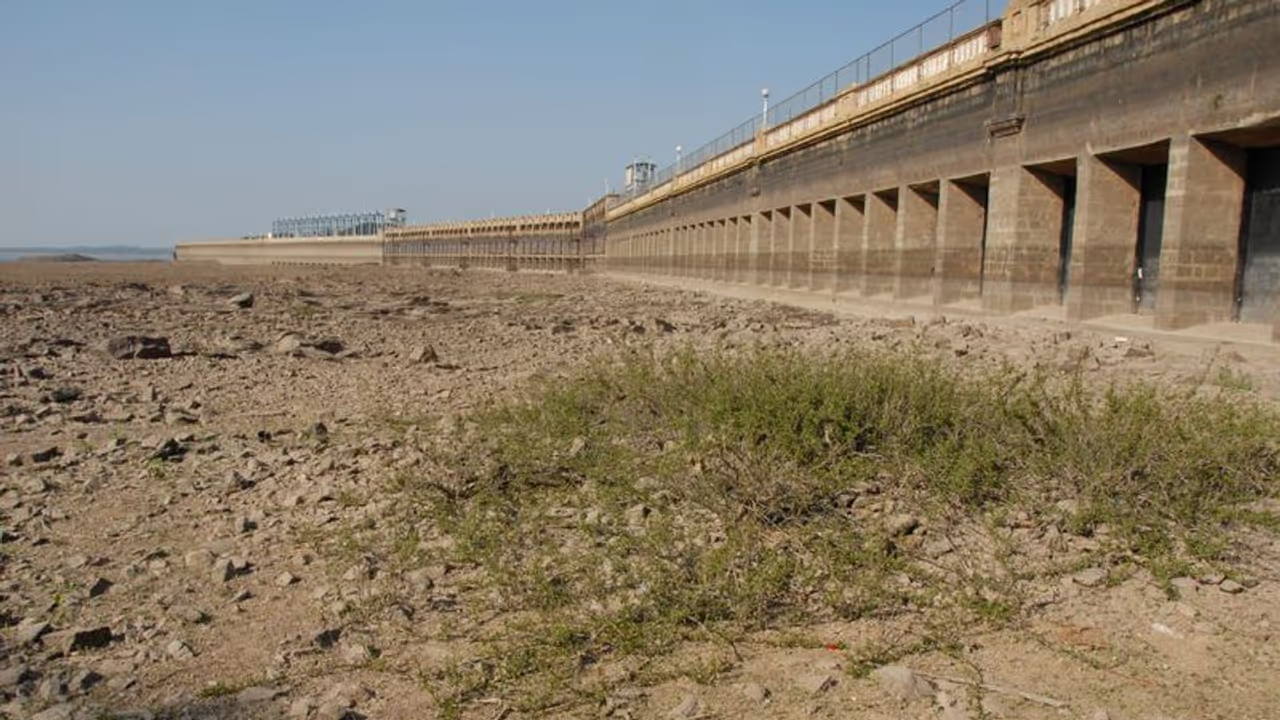Krishnarajasagar Reservoir (KRS) is at a six-year low of 80.25 feet, causing concerns about water shortages and agricultural struggles. Continuous releases to Tamil Nadu, climate factors, and historical trends exacerbate the crisis. Farmers are preparing for planting season, but long-term solutions are needed. Optimism hinges on the upcoming monsoon season for relief.
The drop in water levels at the Krishnarajasagar Reservoir (KRS) to a six-year low, now standing at just 80.25 feet, is causing worry among farmers and authorities. This substantial decrease from previous years is sounding the alarm for potential water shortages and agricultural difficulties in the area.

Looking back at historical data, the stark decline becomes even more apparent. On this day in 2016, the reservoir held 81.88 feet of water, indicating a noticeable drop over the years. Last year, the situation was dire as well, with the reservoir failing to reach its capacity due to insufficient monsoon rains. This led to a mere 114 feet of water being stored in the dam, exacerbating concerns about water scarcity.
Karnataka: Water crisis looms around cities dependent on KRS; Kanwa reservoir emerges as potential source
Continuous water releases amidst shortages:
Compounding the issue, continuous water releases to Tamil Nadu, as mandated by the Supreme Court and local authorities, have further strained the reservoir's water levels. Despite efforts to manage the situation, the current storage of 80.25 feet signals a critical state of exhaustion for the KRS reservoir, with only enough water available for drinking purposes.
Climate factors have also played a significant role in exacerbating the water crisis. The absence of substantial rainfall and unusually high temperatures this summer has hindered water inflow into the reservoir. Despite some rainfall in neighbouring regions like Kerala and Kodagu, the land's increased absorption capacity has limited the replenishment of the reservoir, frustrating farmers who rely on its waters for irrigation.
Karnataka water crisis: Bengaluru, surrounding districts face imminent threat as reservoirs dwindle to 10%
Farmers express concern
In response to the impending water shortage, farmers have begun preparations for the upcoming planting season. Many are resorting to alternative measures such as transporting lake soil to their fields and installing new tube wells to ensure adequate water supply for their crops. Despite the challenges, farmers remain optimistic about the upcoming monsoon season, eagerly anticipating the much-needed rainfall to replenish the dams and canals.
Bengaluru water crisis: Govt clarifies KRS water release is not for TN
Reflecting on historical trends, data shows that the reservoir has faced similar challenges in the past. Over the last two decades, the water level has dropped below 70 feet on multiple occasions, highlighting the recurrent nature of the issue. Moreover, the reservoir has only surpassed the 100-feet mark twice in the last 20 years before the onset of monsoon, underlining the severity of the current situation.
As the region braces for the impact of dwindling water resources, addressing the underlying causes of the water crisis remains paramount. Authorities and stakeholders must work together to implement sustainable water management strategies and explore alternative solutions to mitigate the impact on agriculture and livelihoods in the region. With the hope of a timely monsoon season, there is optimism for the replenishment of the reservoir and relief for the farming community.
